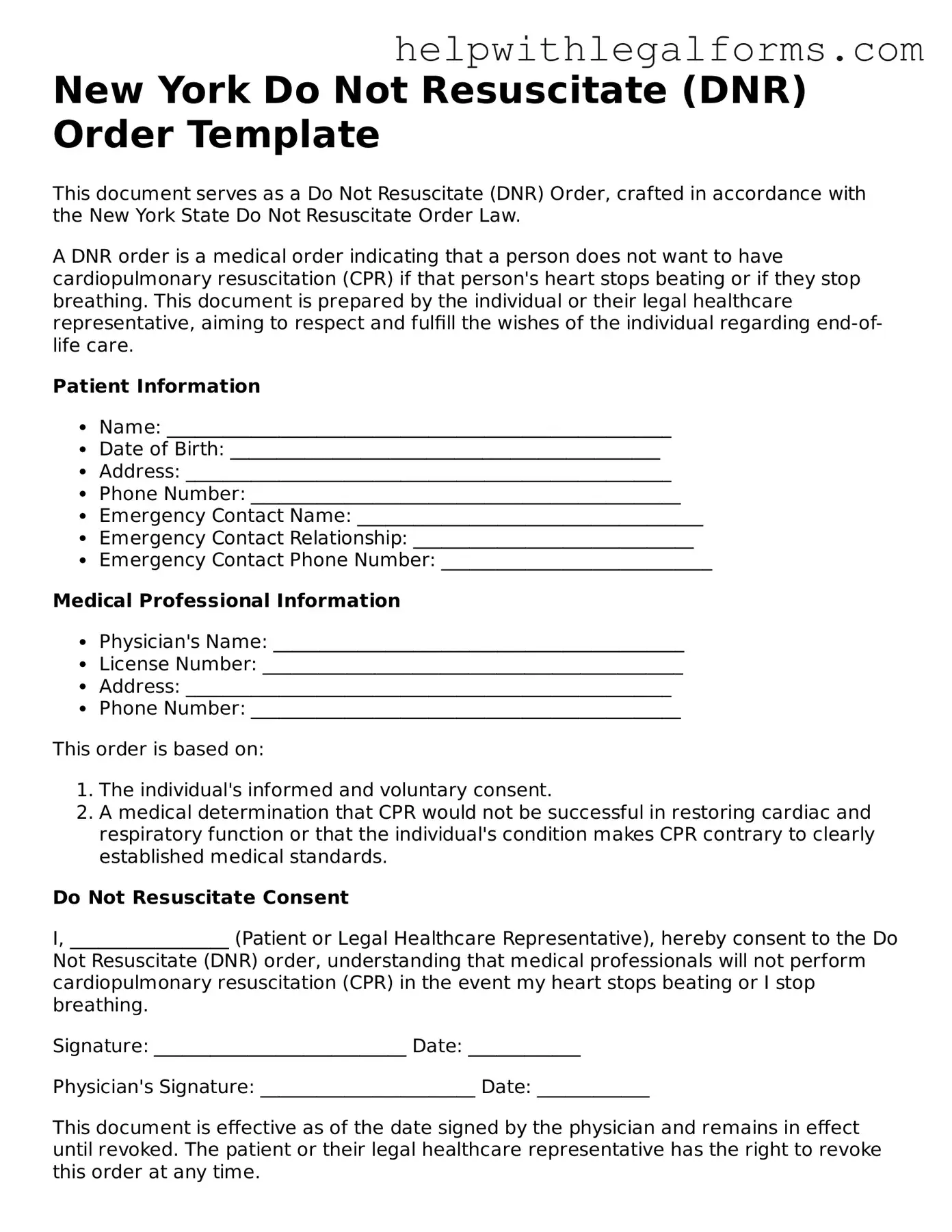What is a Do Not Resuscitate Order (DNR) in New York?
A Do Not Resuscitate Order (DNR) in New York is a medical order that tells health care providers not to perform cardiopulmonary resuscitation (CPR) if a person's breathing stops or if the heart stops beating. It is intended for patients with serious illnesses or those at the end of life who choose not to have CPR conducted.
How can someone get a DNR order in New York?
To get a DNR order in New York, a patient must discuss their wishes with their doctor. The doctor must then agree that a DNR order is in the patient's best interest based on their medical condition and overall health goals. Once agreed upon, the doctor will fill out the DNR form, which must be signed by both the doctor and the patient, or the patient’s health care proxy or legal guardian if the patient is unable to sign.
Where does a DNR order apply?
In New York, a DNR order applies in various settings, including hospitals, nursing homes, at home, and in other non-hospital settings. The order should be visible to healthcare providers, such as being placed on the refrigerator or in a visible location in the patient's room, when implemented at home.
What is the difference between a DNR and a living will?
A DNR is a specific order not to use CPR if a patient's heart stops or they stop breathing. A living will, on the other hand, is a broader document that can include a person's preferences on a variety of end-of-life treatments, including conditions under which they would not want to be kept alive with artificial life support, but it does not automatically include a DNR order.
Can a DNR order be revoked or changed?
Yes, a DNR order can be revoked or changed at any time. The patient or their designated health care proxy can request to revoke or change the DNR order through a discussion with the patient's doctor. Following this, the necessary documentation will be updated to reflect the patient's new wishes.
What should one do if they change their mind about their DNR order?
If someone changes their mind about their DNR order, they should communicate their new wishes as soon as possible to their doctor or health care proxy. The medical team can then take steps to update or revoke the DNR order according to the patient’s current preferences.
Does having a DNR order mean you will not receive any medical treatment?
No, having a DNR order does not mean a person will be denied other medical treatments. The DNR order specifically instructs healthcare providers not to perform CPR. Patients with a DNR order will still receive all other appropriate medical treatments and interventions based on their condition and preferences.
Who should consider a DNR order?
Individuals with serious, life-limiting illnesses, those who are at the end of life, or those with specific wishes not to receive CPR in the event of cardiac or respiratory arrest should consider a DNR order. It is important to have open discussions with family, health care proxies, and medical providers when considering a DNR order.
